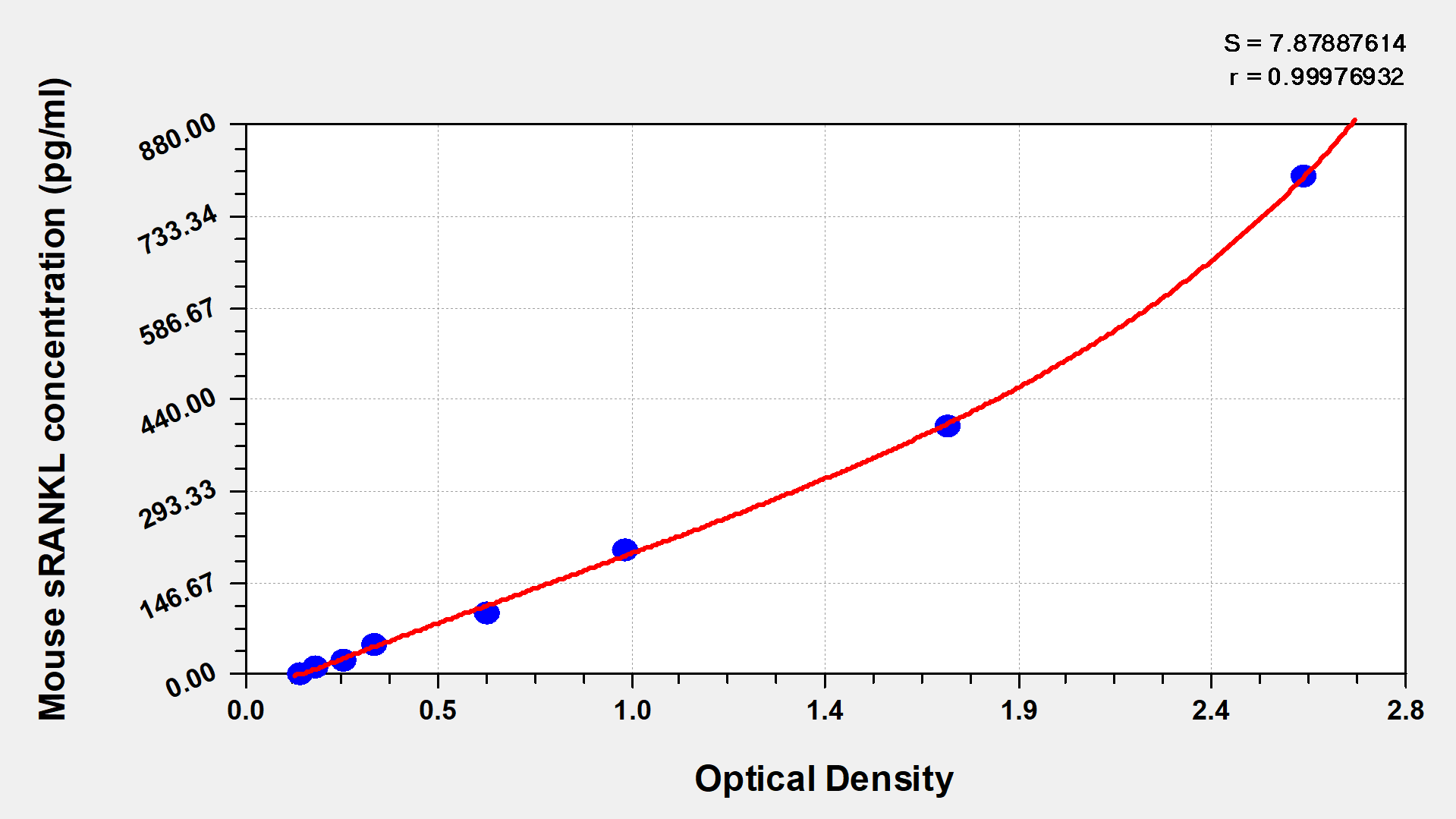The product CSB-E05127m is a sandwich ELISA kit developed to measure levels of mouse soluble receptor activator of nuclear factor-kB ligand (sRANKL) in serum, plasma, cell culture supernates, or tissue homogenates. The enzyme-substrate chromogenic reaction is also used to amplify the signal and quantify the levels of the analyte through the intensity of the colored product. The color intensity positively correlates with the amount of sRANKL bound in the initial step.
RANKL also called TNFSF11, is a multifunctional TNF-like cytokine that plays an important role in bone homeostasis and lymphoid tissue formation. It is essential for osteoclast differentiation and survival. RANKL exerts these functions through its receptor RANK. Studies have shown that mice lacking RANKL cannot produce osteoclasts, which results in a lack of bone resorption and a severely osteopetrotic phenotype. In addition to impaired bone resorption, lack of the RANKL also leads to defects in B-cell lymphopoiesis and mammary gland and lymph node development. Defects in RANKL-null mice revealed RANKL's diverse roles in organ development, immune function, and skeletal remodeling.






